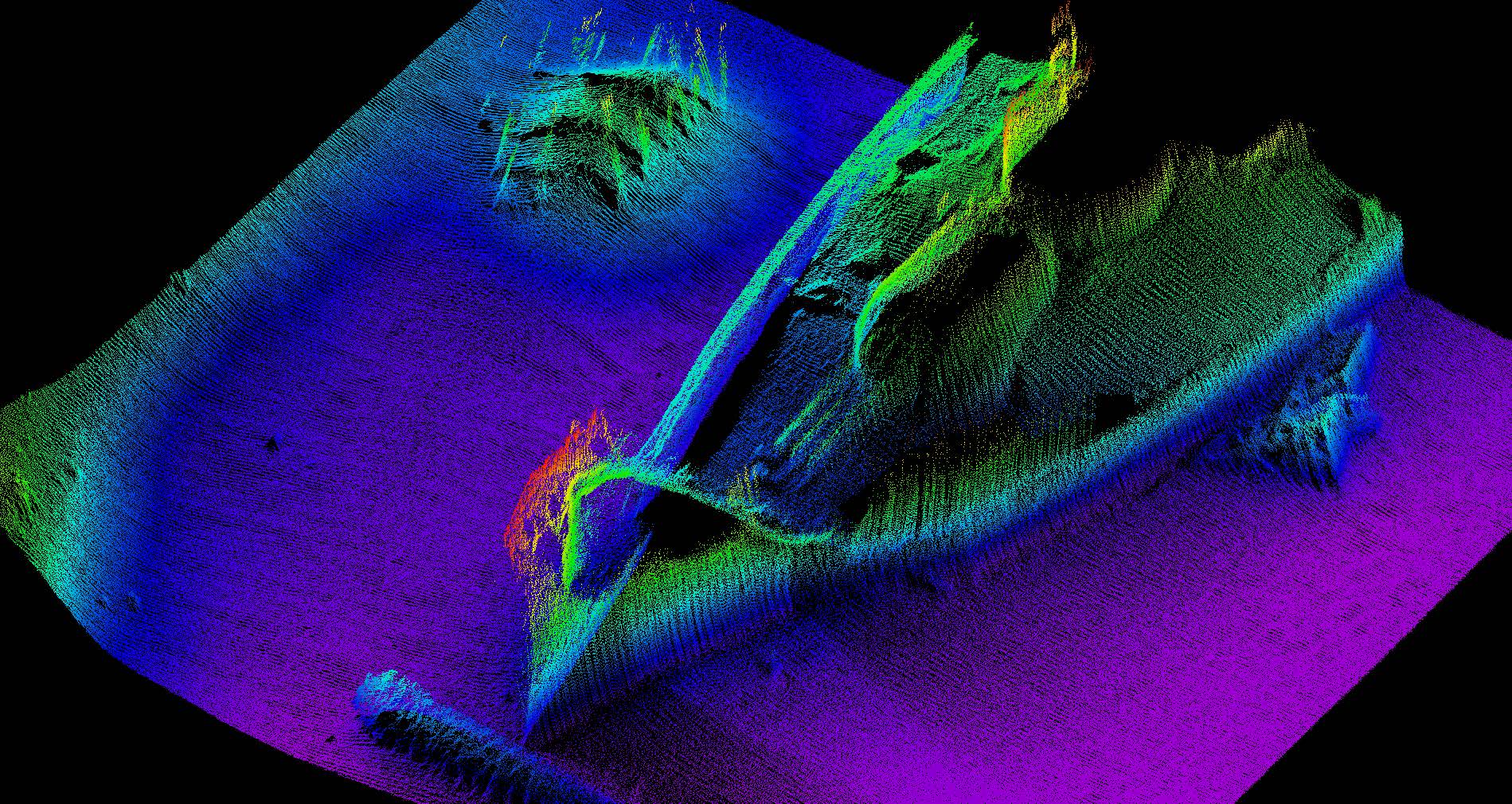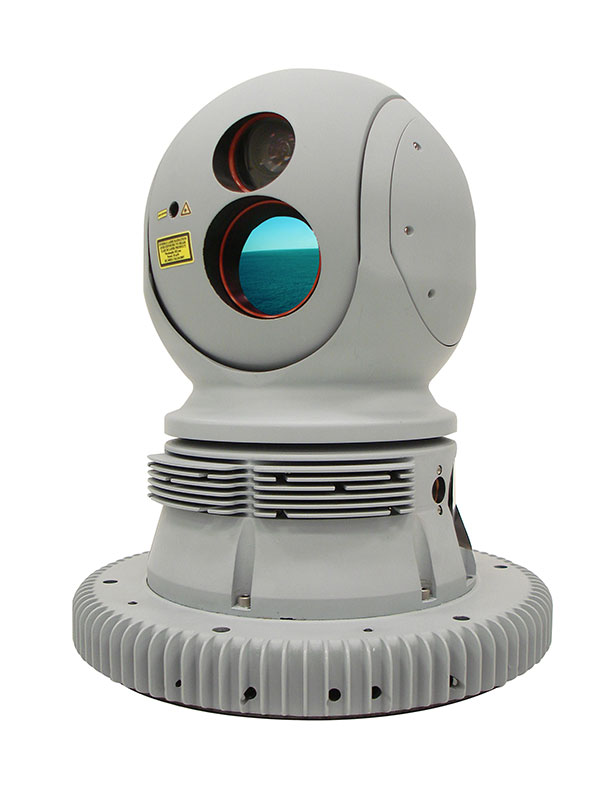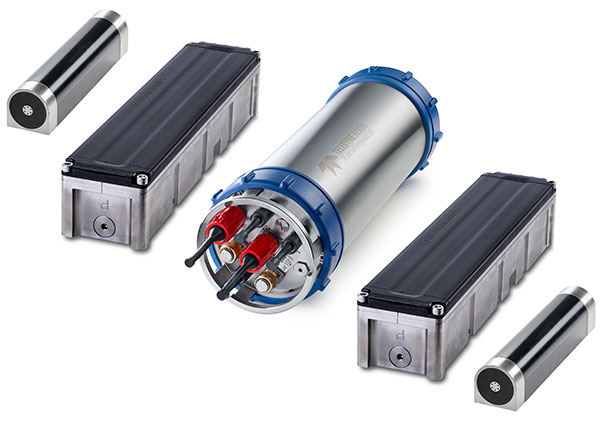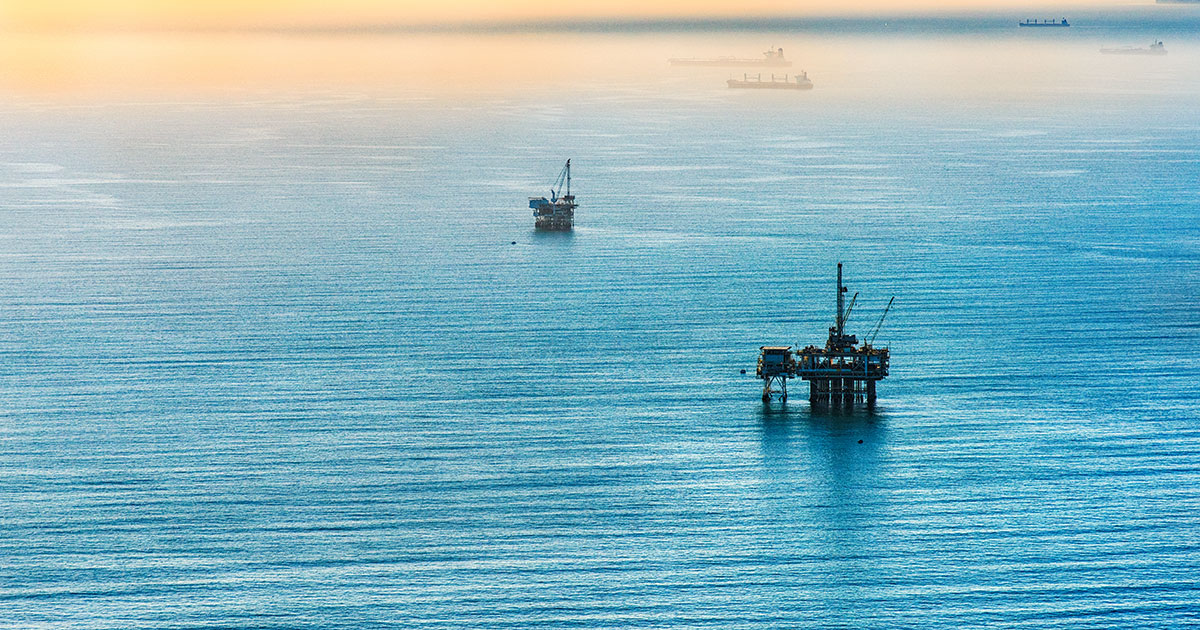Offshore Source has featured numerous articles highlighting the tremendous investment the U.S. oil and gas industry has made in the Gulf of Mexico. For example, in February 2019, an article announcing Phase 3 of the Atlantis Project noted that this effort to create a tie back of eight new production wells would cost US$696 million.
This investment is predicted to grow by leaps and bounds. Another February 2019 Offshore Source article announced the U.S. Bureau of Ocean Energy intention to offer 78 million acres for a region-wide lease sale under the 2017-2022 National Outer Continental Shelf Oil and Gas Leasing Program (National OCS Program). As the article noted, the Gulf of Mexico OCS is estimated to contain 48 billion barrels of oil and 141 trillion cubic feet of natural gas.
 Image captured by the Norbit iWBMS STX multi-beam sonar of the USS Arizona, which was sunk at Pearl Harbor in 1941, taking 1,177 lives with her. When mounted aboard a surface vehicle, such as a USV, multi-beam sonar technology can help conduct safer, faster and more thorough inspections of offshore oil and gas rigs as well as their vast array bottom-mounted pipelines and valves. The NORBIT STX utilizes a steerable transmitter to ensonify objects on the sea floor from multiple angles in one pass. This allows a more detailed inspection of an object with less effort
Image captured by the Norbit iWBMS STX multi-beam sonar of the USS Arizona, which was sunk at Pearl Harbor in 1941, taking 1,177 lives with her. When mounted aboard a surface vehicle, such as a USV, multi-beam sonar technology can help conduct safer, faster and more thorough inspections of offshore oil and gas rigs as well as their vast array bottom-mounted pipelines and valves. The NORBIT STX utilizes a steerable transmitter to ensonify objects on the sea floor from multiple angles in one pass. This allows a more detailed inspection of an object with less effort
There is little question that the United States intends to accelerate its harvesting of oil and gas in the Gulf of Mexico as part of the Trump Administration’s America-First Offshore Energy Strategy. And while much of the talk regarding America’s increased energy production has focused on fracking, which has opened up billions of barrels of oil and trillions of cubic feet of natural gas to production, it is the offshore oil and gas industry that continues to provides a huge amount of the United States’ energy production.
Indeed, according to Forbes Magazine, offshore energy production has been increasing over the past decade and now stands at over two-and-one-half million barrels of oil, and almost three trillion cubic feet of gas a day. But the good this industry provides for the nation – and increasingly the world – as the United States becomes a net energy exporter, goes unnoticed by most until an incident such as the 2010 Deepwater Horizon disaster in the Gulf of Mexico draws attention to the cataclysmic impact of having just one of the hundreds of oil and gas rigs in the Gulf have a material failure.
It is difficult to overstate the impact of the 2010 Deepwater Horizon disaster, the largest marine oil spill in the history of the petroleum industry. And it is worth noting that the second largest marine oil spill in history, the Ixtoc 1 spill, also occurred in the Gulf of Mexico. These – and other industry disasters – have resulted in ongoing environmental activism that has given some second thoughts about the viability of continuing to drill for oil and gas offshore.
There is little question that the offshore oil and gas industry takes its stewardship of the environment seriously and has put procedures in place to ensure the safety and security of its offshore infrastructure. However, the industry may well be encumbered in this effort unless or until it embraces emerging technology to enable a more thorough – and safer – inspection of its offshore rigs.
 SeaFLIR-230 Gyro-stabilized High Definition EO/IR zoom camera, which is optimized for maritime operations and includes multiple sensor systems
SeaFLIR-230 Gyro-stabilized High Definition EO/IR zoom camera, which is optimized for maritime operations and includes multiple sensor systems
The methods used to inspect offshore oil and gas platforms in 2019 are little changed from the procedures utilized decades ago. Rig operators use a combination of remotely operated vehicles (ROVs) of various types in concert with divers to perform these inspections. This methodology is good as far as it goes, but ROVs have a limited field of view, and putting divers in the water always involves substantial risk and increasingly high cost. A number of companies have participated in industry fairs and have offered solutions to enhance the efficacy of oil and gas platform inspections.
To be clear, the offshore oil and gas industry is challenged to not only prevent catastrophic disasters like Deepwater Horizon from occurring, but to also deal with more routine issues like wear and tear of underwater components in order to spot impending failures before they happen and take corrective action where needed. And much like an iceberg, what the eye can see above the water when viewing an oil or gas rig is only part of the story. There is a tremendous amount of the infrastructure that is below the surface – and unseen.
Beyond these mechanical issues, the oil and gas industry must guard against pernicious attacks on its offshore platforms by environmental activists – or even by terrorists. It is not too much of a stretch to imagine that if just one oil or gas platform in the Gulf of Mexico was attacked, the entire production could be shut down for days or even weeks. The impact on oil and gas prices would be immediate – and disastrous.
Unmanned surface vehicles (USV) can greatly enhance the ability to rapidly and safely inspect offshore oil and gas rigs. While these USVs will not completely replace ROVs and divers, they can be used first to identify areas needing further inspection, thus greatly reducing the need for ROVs and divers.
Part of the attraction of using a USV for offshore oil and gas platform inspections is that unmanned surface vehicles have had extensive use in military exercises, experiments and demonstrations in both near-shore and open-ocean operations, as well as hundreds of hours of use in a number of civilian missions ranging from commercial canal and dam hydrography, to commercial power plant inspections, to port and harbor security.
These civilian missions are ones where USVs have used the same kind of above- and below-surface sensors that would be used for offshore oil and gas rig inspections. For example, over the past several years of commercial applications, several different size (6- 8- and 12-foot) MANTAS have been equipped with a number of sensors such as a Teledyne BlueView M900 single-beam echo-sounder, Teledyne RESON T20 high resolution multi-beam sonar, Norbit iWBMS STX multi-beam sonar, SeaFLIR-230 Gyro-stabilized High Definition EO/IR zoom camera with laser tracking, FLIR M232 thermal camera, FLIR Duo EO camera, and others.
This USV technology can be used today to conduct safer, faster and more thorough inspections of offshore oil and gas rigs as well as their vast array bottom-mounted pipelines and valves. This can result in a substantial decrease in the number of ROV missions and the use of human divers. One concept of operations would have one, or more, 12-foot MANTAS under the control of the Rig Command Center in an oil or gas platform.
It is likely that the platform owner would schedule routine inspections of one or more platforms on a periodic basis to check the integrity of the rig structure itself as well vertical pipes, fittings, bottom valves, pipelines and other components for wear and tear as well as impending failure. Beyond these routine inspections, the platform owners and operators would be able to conduct on-demand inspections in the wake of natural phenomena such as hurricanes or storm surges or when the Rig Command Center discovered something out of the ordinary based on a number of in-place, static, sensors.
There are a wide-range of ways a platform operator could use USVs to ensure oil and gas rig security. Three that come immediately to mind are:
- One of the early indicators of material failure of oil or gas rig components involves oil from the rig seeping into the surrounding water. USVs can be equipped with water-monitoring gear such as Current-Temperature Depth (CTD) sensors, Acoustic Doppler Current Profilers (ADCP), flourometers and others to detect changes in the water quality in the immediate vicinity of the rig.
- For surface investigation, which would include area security, external rig structure investigation and surface contact monitoring, among other missions, USVs can be equipped with a Gyro-stabilized High Definition EO/IR zoom camera, or, other alternatives.
- For underwater imaging, USVs can be equipped with a multi-beam sonar, a forward-looking or side-scan sonar, or any of many other commercial-off-the-shelf underwater sensors that can image underwater piping and bottom structures. This technology has been well tested and is in high demand to inspect commercial dams, energy plants, canals and other structures.
 Teledyne RESON SeaBat T-series sensors
Teledyne RESON SeaBat T-series sensors
Utilizing a USV, the rig operator has a number of options to employ the USV for periodic or on-demand inspections. Today’s USVs can be programmed to operate in an autonomous or semi-autonomous mode to search along a pre-determined course through the use of pre-programmed waypoints, or it can be controlled by the operator via a laptop, tablet, or smart phone. As the mission progresses, the video and sonar imaging can be sent directly to the rig in real-time, providing immediate notification of what the vehicle discovers above or below the water surface, thus enabling operators and management to make time-sensitive decisions.
There are various ways to leverage USVs for the rapid and economical inspection of oil and gas rigs. Under one concept of operations (CONOPS), an operator in the rig command center would have a USV on patrol on a predictable pattern inspecting the rig above and below water. If the vehicle discovers an anomaly, the operator will be alerted in real time. Then, the operator can switch to remote manual control and can command the USV to conduct finer-grained analysis with the same – or different – sensors.
If this investigation uncovers an area of concern, then an ROV, or, if necessary, a diver, can be deployed to make a repair. Clearly, this CONOPS will secure the integrity of the rig while also reducing the false alarms generated of other methods. Conversely, if the investigation does not reveal an issue, the USV can return to its autonomous mission profile that the operator had previously programmed.
Gulf of Mexico oil and gas rigs are, in some areas, close enough for several rigs to share one USV. For example, with a cruise speed of 20 knots, a burst speed of 40 knots and a cruise radius of 60 nautical miles (much more with solar panels installed), one MANTAS can service a number of rigs. This scheme can be particularly valuable as it could well result in sharing best-practices among various oil and gas companies where, if a USV discovers that a valve, fitting or other gear on one rig has failed, other rig operators can inspect that particular item with increased periodicity.
Offshore oil and gas production in the Gulf of Mexico is a mainstay of America’s energy independence and growing status as a net energy exporter. Every industry indicator suggests that the number of oil and gas rigs in the Gulf of Mexico will increase, at least through the end of this decade – and perhaps longer – under the America-First Offshore Energy Strategy.
Protecting these expensive and vulnerable rigs from failure, sabotage, or other hazards is a first order priority for the industry and one that is increasingly expensive. Using low-cost, commercial off-the-shelf USVs can ensure a more comprehensive inspection of rigs and all their attendant fittings and pipelines while saving time and money, all while not endangering human divers. This is a win-win for the industry.


